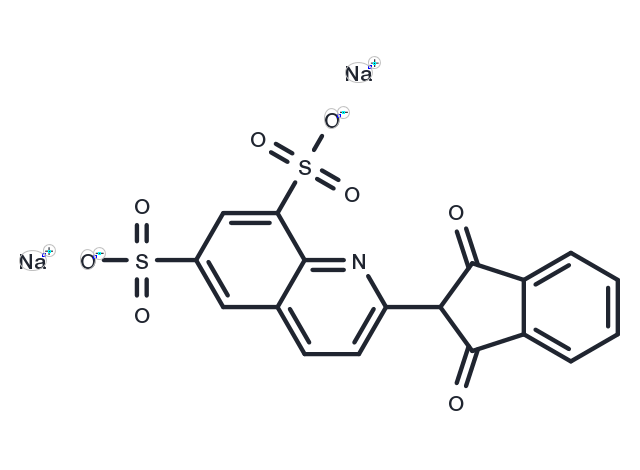keep away from direct sunlight
Powder: -20°C for 3 years | In solvent: -80°C for 1 year

Quinoline Yellow WS is a mixture of organic compounds derived from the dye Quinoline Yellow SS (Spirit Soluble). Owing to the presence of sulfonate groups, the WS dyes are water-soluble (WS). It is a mixture of disulfonates (principally), monosulfonates and trisulfonates of 2-(2-quinolyl)indan-1,3-dione with a maximum absorption wavelength of 416 nm.

| Pack Size | Availability | Price/USD | Quantity |
|---|---|---|---|
| 100 mg | Inquiry | Inquiry | |
| 500 mg | Inquiry | Inquiry |
| Description | Quinoline Yellow WS is a mixture of organic compounds derived from the dye Quinoline Yellow SS (Spirit Soluble). Owing to the presence of sulfonate groups, the WS dyes are water-soluble (WS). It is a mixture of disulfonates (principally), monosulfonates and trisulfonates of 2-(2-quinolyl)indan-1,3-dione with a maximum absorption wavelength of 416 nm. |
| Synonyms | E 104, Food Yellow 13, Acid Yellow 3, L-Gelb 3, Dye Quinoline Yellow |
| Molecular Weight | 477.37 |
| Formula | C18H9NNa2O8S2 |
| CAS No. | 8004-92-0 |
keep away from direct sunlight
Powder: -20°C for 3 years | In solvent: -80°C for 1 year
You can also refer to dose conversion for different animals. More
bottom
Please see Inhibitor Handling Instructions for more frequently ask questions. Topics include: how to prepare stock solutions, how to store products, and cautions on cell-based assays & animal experiments, etc.
C.I. Food Yellow 13 8004-92-0 E 104 Food Yellow 13 Acid Yellow 3 L-Gelb 3 E104 Dye Quinoline Yellow E-104 inhibitor inhibit
